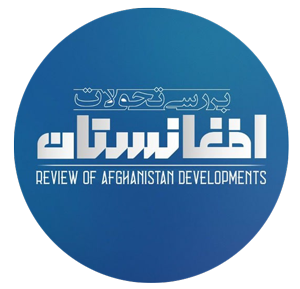Review of Afghanistan developments
The internet shutdown in Afghanistan commenced on the evening of Monday, September 29, and persisted for almost 48 hours. Reports from sources like Net Blocks indicate that the internet connectivity in Afghanistan plummeted to zero, and alongside the internet services, telecommunications networks were also disabled. This interruption led to extensive disruptions throughout the nation, resulting in a far-reaching impact. Clearly, beyond hindering the daily routines of numerous individuals, this scenario also adversely affected the Afghan economy, which warrants further investigation. The purpose of this note is to present a series of news updates and analyses stemming from the internet and telecommunications shutdown in Afghanistan, as reported by the media and political adversaries.
It is reasonable to assert that the surge of news and analysis stemming from the internet shutdown in Afghanistan had a psychological effect on Afghan society, the Afghan diaspora, and the global community. This surge, orchestrated by adversaries of the Taliban government, succeeded in generating a chaotic news environment regarding Afghanistan within a span of 48 hours. The insights gained from these 48 hours could serve as valuable lessons for the future.
Review of the news- analysis wave during the internet shutdown in Afghanistan
An examination of the news and analyses offered by the media, users, and anti-Taliban individuals on social media concerning the internet shutdown in Afghanistan reveals that the content generated sought to communicate two overarching themes to the audience: chaos and disorder in Afghanistan, as well as covert intelligence operations conducted by the Taliban government. Among the most significant of these narratives are the following.
Sarah Adams’ viewpoint: “Hiding the Movement of Foreign Fighters”
Sarah Adams is a retired US intelligence officer who, following her retirement, has transitioned into investigative work, media, and social media engagement. Adams, an outspoken critic of the Taliban for reasons that remain unclear, leverages her previous role to suggest she possesses insight into the current behind-the-scenes developments in Afghanistan, despite the widely recognized fact that intelligence access in the region is highly restricted.
Sarah Adams, in a post on X-Net, asserted that the internet blackout was implemented to conceal the movement of thousands of foreign fighters from Bagram to various camps. She stated: The Taliban severed internet connectivity to stop the recording of the transfer of thousands of foreign fighters from Bagram to other terrorist facilities. She further remarked: These Neanderthals are incapable of governing and show no concern for the citizens of Afghanistan. Their sole focus is on safeguarding the numerous terrorist organizations that they harbor.
Due to his professional experience, this assertion was shared by individuals and media organizations that are against the Taliban. He failed to provide any substantiation for this assertion; instead, it was merely a reiteration of his psychological tactics aimed at the Taliban government. Nevertheless, media outlets in opposition and users residing abroad embraced this perspective and shared it extensively. It is important to highlight that the inaccuracies of the information he presented have been demonstrated repeatedly. This former US intelligence officer, who possesses a thorough understanding of psychological warfare strategies, leveraged the trending topic of Bagram to incorporate this keyword into his communication to garner greater attention. However, it is evident to any reasonable person that relocating foreign fighters to Bagram serves as a method to target them.

“Death of Taliban leadership” viewpoint by the Green trend under the guidance of Amrullah Saleh
The Green Trend and social media accounts linked to Amrullah Saleh characterized the nationwide internet blackout as indicative of an internal crisis within the Taliban leadership. The group, regarded as an adversary of the Taliban government, reported on the potential death of Haibatullah Akhundzada, violent confrontations in the provinces, or even the possibility of “a coup beginning.” This oppositional perspective of the Green Trend arises from a belief in the existence of conflict among Taliban leaders.
Amrullah Saleh, the former head of the Afghan National Security Agency, linked the internet shutdown in Afghanistan to information suppression during crises (to manage the narrative or hinder opposition collaboration) and attempted to leverage his intelligence resources to support his perspective. However, this perspective was also a politically motivated interpretation of events that was demonstrated to be incorrect after 48 hours of internet shutdown in Afghanistan.
The Green Trend, through its significant presence on social media, effectively disseminated this narrative, which even swayed some officials from various countries.
“Sirajuddin Haqqani Deposition” viewpoint; based on a fake letter
Another extensively covered news item indicated that the internet shutdown in Afghanistan was associated with the removal of Sirajuddin Haqqani from his position in the Taliban government’s interior ministry. Reports suggest that this information stemmed from a forged letter, which claimed that the Afghan interior minister had been ousted and succeeded by Mohammad Yousuf Wafa. To enhance its authenticity, the letter bore the signature of the Taliban leader.
In light of the rumors that had emerged earlier regarding Sirajuddin Haqqani’s significant discord with the Taliban leader, this misinformation also caused many to assume that the internet shutdown in Afghanistan was intended to avert turmoil stemming from Haqqani’s ousting. Nevertheless, the inaccuracy of this information was further confirmed following the restoration of telecommunications networks.
The “coup” viewpoint
Regardless of any official declarations or specific remarks made by individuals, rumors regarding a ‘coup’ have been disseminated in cyberspace and through Persian-language media outlets located outside of Afghanistan. These rumors can be attributed in part to the information void caused by the internet shutdown in Afghanistan, and in part to the psychological tactics employed in information warfare. As is typical during crises, when the dissemination of official information is disrupted, this void is occupied by a multitude of narratives.
The perspective of a coup has gained such prominence that it is evident in communications from certain officials in adjacent countries.
The opposition’s new tactic after the intelligence scandal
Despite the fact that the Internet shutdown in Afghanistan resulted in the rise of a news and analysis flow from individuals and media organizations critical of the Taliban, this flow was short-lived, lasting merely 48 hours before dissipating once the shutdown concluded. Following this information crisis, which is likely to diminish their credibility among the Afghan populace and in other nations, the anti-Taliban movement adopted an alternative strategy.
The opposition has devised a new strategy to obscure the inaccuracies in news and analysis by introducing a narrative suggesting that the prime minister is in conflict with Mullah Haibatullah Akhundzada, the Taliban leader. Afghanistan International has once again referenced its dubious sources in this context, stating: Sources have indicated that the internet was activated under the directives of Mullah Hassan, the Taliban’s prime minister. Furthermore, Dawood Naji, the head of the political committee of the Freedom Front, added to this fabricated narrative by asserting that this action signifies Kabul’s unprecedented defiance of Haibatullah’s orders in its opposition to Kandahar.
The Reason behind the internet shutdown in Afghanistan
The procedure for the internet shutdown in Afghanistan commenced in several provinces before the entire country experienced a blackout. At first, the officials associated with the Taliban government declared that the directive to shut down the internet originated from the Taliban leadership, citing the rationale of “preventing immoral conduct.” Nevertheless, once the internet was completely disabled across Afghanistan, the Taliban officials failed to offer any explanation.
Unofficial reports from certain Taliban government officials and individuals associated with the government indicate that a significant data breach in Afghanistan prompted the Taliban leader to issue an order to disconnect the internet in the country. As per these sources, given that the majority of telecommunications networks are foreign-owned and maintain their servers in their main facilities, the Ministry of Communications found it essential to relocate the servers of these networks to a designated site linked to the ministry. This action aims to safeguard the nation’s data and prevent access by foreign intelligence agencies. Shahab Liwal, a member of the cultural commission of the Taliban government, is among those who shared this information on X-Net.
Related Articles
Media War: Pakistan’s New Approach in Afghanistan
Bagram: New challenge for the U.S. & Taliban
Conclusion
The internet shutdown in Afghanistan resulted in several significant repercussions: firstly, it shocked the Afghan populace; secondly, it had substantial economic implications for the Taliban administration; and thirdly, it led to an information crisis for media organizations located overseas and opposition factions.
It would be advantageous for the Taliban government to ensure that the public is well-informed to prevent the opposition from establishing a narrative and generating anxiety within public opinion. This way, in the absence of official information, the opposition’s narrative will not dominate among the populace.
The citizens of Afghanistan should take lessons from this event and cease placing their trust in the media and external sources of information to avoid being swayed by psychological operations.
Follow us on social media
X Facebook

















